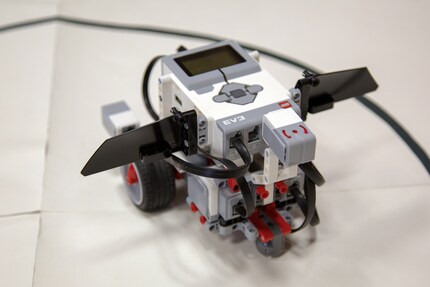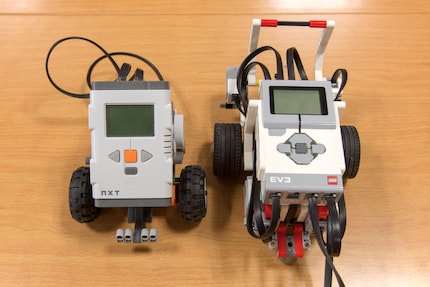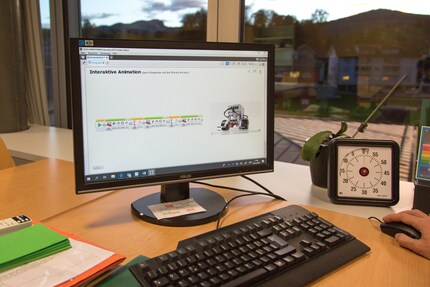
Guide
Put away your LEGOs!
by Ramon Schneider

Allowing pupils to build and program anything from simple commands to complex automations, LEGO Mindstorms is ideally suited for classroom use. I’ve spoken to a secondary school teacher to find out how exactly he’s been working with it for over 13 years.
Manuel Marquart is a secondary school teacher at a school in Altstätten, Canton St Gallen. He teaches the subjects mathematics and science and has included LEGO Mindstorms robots in his classrooms for 13 years. I wanted him to find out how this helps his pupils and how he justifies the rather high costs.
This robot can be personalised.What’s the most interesting aspect of Mindstorms?
The most important thing my students learn in this class is troubleshooting. The cause of errors is usually found in the user, be it in the program on the computer or in the hardware on the robot. Troubleshooting is one of the most exciting aspects for the classroom and teaches problem-solving strategies.
Which Mindstorms model do you use in class?
We used to have the original version at our school, the RCX, but we soon switched to the newer version, the NXT. We used this for almost ten years, but then the batteries began to fail. As we were forced to replace more and more parts, we decided to upgrade. Almost two years ago we bought the latest version, the EV3.
So would you like there to be a Lite version for schools?
That would be a good idea. An EV3 set costs around 400 francs – too much for many schools. If a Lite version was available at a lower price, I'm sure more schools would be able to offer a similar optional subject.
Is the investment worth the money nonetheless?
I’d says so. At our school, we've been teaching with the same robots for several years. If you take care of the sets and make sure they are always complete, you can use them for ten years at least.
Did you learn programming within your studies of Teacher Education or are you self-taught?
I read up on and taught myself everything. As far as I know, the canton also offers teaching courses for this subject.
You're still young. How do teachers who are about to retire get on with such lessons?
The user interface is very intuitive, easy to understand and self-explanatory. As long as a person has basic understanding of logical sequences, age is irrelevant.
Are you a school with a small or large project in mind? Get in touch with our B2B team. They will provide you with a customised solution or a quote.

How exactly do you integrate the robot into your lessons?
Manuel Marquart, primary school teacher: In the first few weeks, I start teaching the basics and make sure students get to know all the blocks. After this, they know what’s possible with these blocks. After the basics, we start with small projects. This can be anything from moving cans to racing. Depending on the level of the group, we tackle simple or more challenging projects. Everyday projects are also interesting – a robot vacuum cleaner, for instance, that moves around the room and changes direction when it faces a wall.

The EV3 has more to offer: more memory, more connections, etc. Are there any functionalities you miss?
On the contrary; there are almost too many functions for what we need it for. Our students can take robotics as an optional subject as part of the course in media and computer science. If they do so, they have two lessons per week during half a year. In this time, we can just about scratch the surface and never fully exploit the potential of Mindstorms.

LEGO MINDSTORMS Education EV3
45544, LEGO Mindstorms


Siemens EQ700 integral TQ717D03